#shrine of kashmir
Text
Kupwara: An abode of Sufi Saints-Khursheed Dar (Pohrupeth langate)
Kupwara is among those few districts of Jammu and Kashmir that are blessed in many ways. Apart from the sheer natural beauty that Kupwara district possesses, the district also has a rich heritage and culture. The diversity that this district possesses in the form of various tourist sites, pertaining to different facets of history, religion, and culture is phenomenal. One aspect of this diversity…
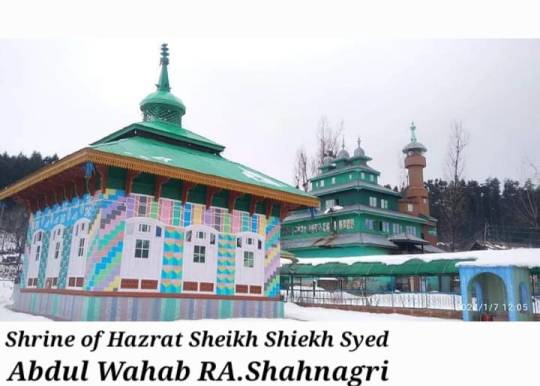
View On WordPress
#army of God#chishti#kashmiri spiritual circle#kashmiri sufism#kupwara shrines#naqshbandi#owaisi#Qadiri#qubravi#Quran#saints of kashmir#shadhili#shazili#shorawardi#shrine of kashmir#shrine of kupwara kashmir#soharwardi#spiritual persons in kashmir#spirituality in kashmir#spirituality of kashmir#true Sufis#who are sufis
0 notes
Text

June 2024: A view of the forest shrine of Mian Nizamuddin Kiyanwi, the revered Muslim saint of the nomadic Gujjar tribe in Baba Nagri, northeast of Srinagar, Indian-administered Kashmir. [Dar Yasin/AP Photo]
4 notes
·
View notes
Text
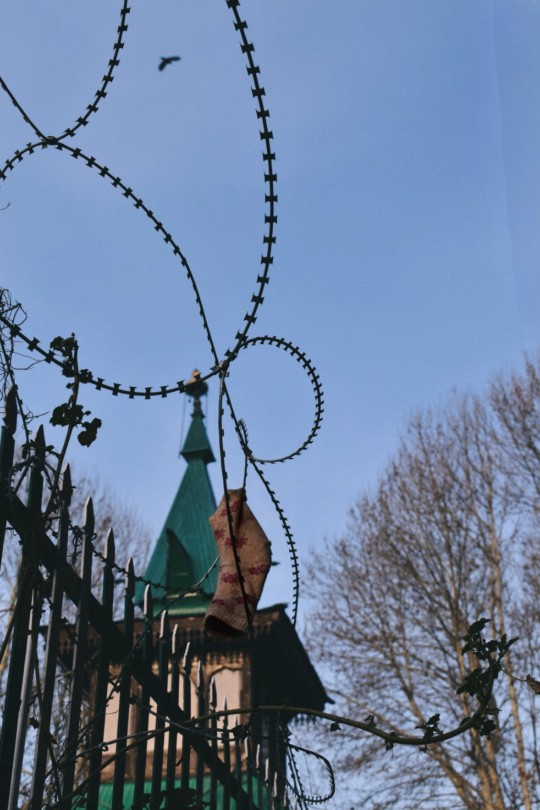
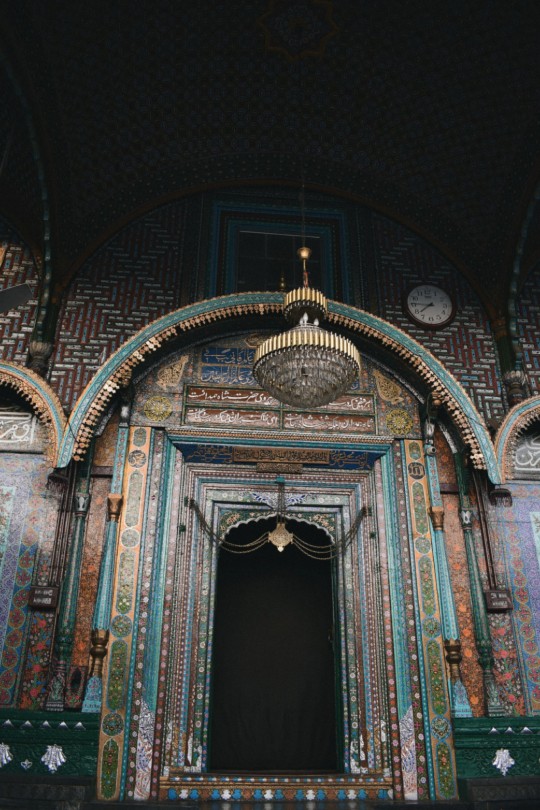

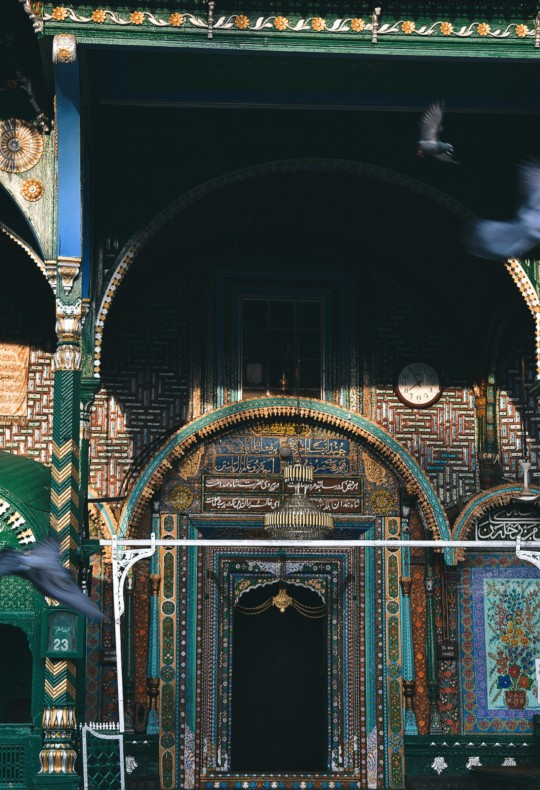
The architecture of Khanqah-e-Moula Kashmir>>
4 notes
·
View notes
Text

Naseema (left) at her house in Grandwan with her daughter, Shazia.
Shefali Rafiq
Naseema Akhter was just 20 in 2002 when her husband, Syed Anwar Shah, left for work and never returned. Shah was one of thousands of young men forcibly taken away by Indian forces or, in some cases, unknown gunmen. Government officials allege these men crossed over to Pakistan to train with separatist militants, but the families deny this.
Naseema was left with an 18-month-old daughter, Shazia, and the burden of family responsibilities and financial worries. Today, after her daughter got married last year, she lives alone in a two-room house in Grandwan, a village in Aishmuqam, south Kashmir. The loss of her husband has left a deep scar on her psyche.
"My mind tells me that my husband is not alive, but my heart is not ready to accept it," Naseema said, while visiting the local shrine. Shrines in Kashmir are often seen as healing places – especially for women.
For several years after her husband’s disappearance, Naseema would wake up in the middle of the night. “I would see him in my dream and then, when I woke up, I would realise I am living in a hell,” she said, fighting back tears. “I still get headaches for days at a time, and the nightmares won’t leave me alone.”
Instead of getting medical help, she seeks refuge at the nearby shrine. “I cannot afford to go to a doctor every week. But I have to pray for my health, for the sake of my daughter,” she said.
Naseema said her life would not have been as difficult if she had found her husband’s body. “This hollowness inside me can only be understood by someone whose loved one has disappeared,” she added.
Dr Majid, senior psychiatrist at the government hospital in Pulwama, who treats many such patients, said their depression is of the worst kind: “It is very important to have closure. These patients do not have that and it makes it even worse.”
The mental health crisis in Kashmir is increasing, following a lockdown (partly to do with the pandemic) that has lasted nearly two years. Majid, who is the only psychiatrist serving two districts (Pulwama and Shopian) said that almost 60% of his patients are women.
#long post#shefali Rafiq#grandwan#aishmuqam#village#kashmir#mental health#shrines#religion#trauma#war#violence
15 notes
·
View notes
Text
3.75 lakh devotees performed Amaranth Yatra; another batch of 3,471 pilgrims left for Kashmir
JAMMU — Around 3.75 lakh devotees have performed the ongoing Amarnath Yatra so far as another batch of 3,471 pilgrims left for the Valley on Saturday.
Officials said that since it began this year on June 29, around 3.75 lakh devotees have performed the Amarnath Yatra during the last 21 days.
Over 11,000 devotees had ‘Darshan’ inside the cave shrine on Friday despite intermittent rain and…
#Amarnath Cave Shrine#Amarnath Yatra#Amarnath Yatra Pilgrims#Jammu and Kashmir (J&K)#Kashmir#Shri Amarnathji Shrine Board (SASB)
0 notes
Text
#Narendra Modi#Jammu and Kashmir#Article 370#development projects#tourism#Switzerland#G20 event#Gulf countries#balanced development#harmonious region#dynastic rule#inclusive growth#social justice#Mata Vaishno Devi Shrine#global interest#infrastructure#parliamentary elections#One Rank One Pension#armed forces#prosperous India#rail projects#aviation#road sectors#inauguration#foundation stone-laying#Kimberly Rodrigues#Maulana Azad Stadium#£3.2 billion#Rs 32#000 crore
0 notes
Text

Discover unforgettable experiences with our guide to the top 10 things to do in Srinagar. From houseboats to Mughal gardens, Srinagar awaits!
#Ultimate Guide for Srinagar#Things to do in Srinagar#Kashmir Tour packages#houseboat stay#sports in Kashmir#Tulip Festival#Hazratbal Shrine#Mughal gardens.
1 note
·
View note
Text
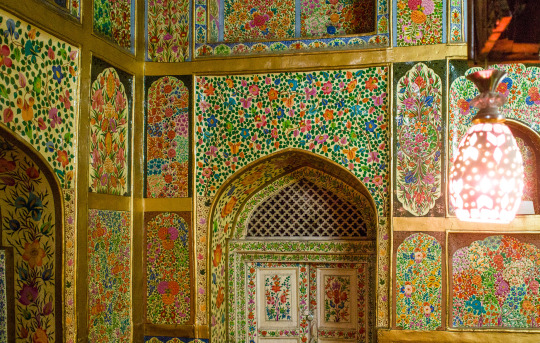
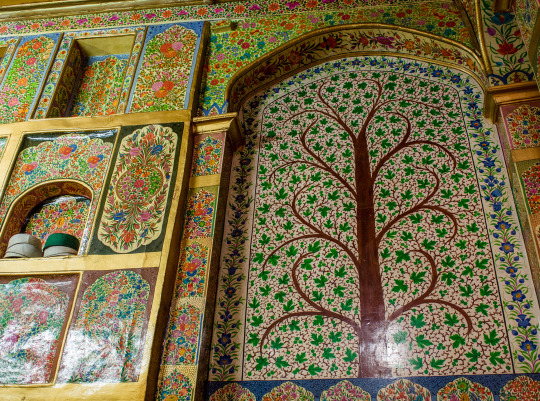
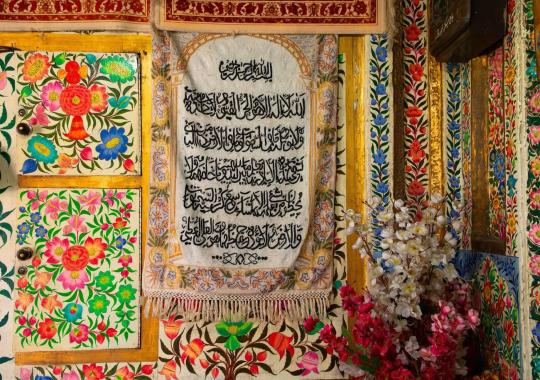
the papier-mache walls of the shrine in kanqah naqshband sahib in srinagar, kashmir, built in its current form in 1633. the complex is dedicated to bukharan baha' al-din naqshband, who founded the naqshbandi sufi order, and is a mausoleum for one of his descendants. the shrine is a site for ziyarat as it contains what's said to be a lock of the prophet muhammad's hair.
#kashmir#interior#details#worship#muslim#nmenam#papier-mache kashmir#religious tombs#my posts#i forgot to mention in my post on kanqah-e-moula that papier-mache was brought over to kashmir by the same guy who brought#over islam. which is why papier-mache walls in kashmir are in muslim places of worship a lot#of the time. and also in iran and central/northern south asia there's some papier-mache decals on muslim places of worship too iirc#but the papier-mache is mostly on items because it's easier to do it on items than whole walls#kashmir is well-known for papier-mache stuff#the fancy technical term is ''lacquerwork'' but i already used papier-mache so
218 notes
·
View notes
Text
Let's talk about the idolized Aurangzeb. What he did and why is he considered great?

We will be focusing on the destruction of temples and hindu genocide done by him to debunk claims deny that this.
By the order of Aurangzeb (1645 AD) according to Mirãt-i-Ahmadî, Temple of Chintaman situated close to Sarashpur (Gujarat) and built by Sitaldas jeweller was converted into a mosque named Quwwat-ul-lslam (might of Islam) (1645 AD.) A cow was slaughtered to 'solemnize' the 'ceremony'.
Slaughtering a cow was a heinous choice, cow being one of the holiest animal in Hinduism. As well as, Hinduism prohibits animal slaughter, to do it right where their place of worship used to be where now stands a Mosque was simply to mock and destroy the souls of the indigenous population. The Pandits and Cows were always their main targets.
This was done before he even became the king, he was just a prince at this point.
When he became the king he sent Mir Jumla on an expedition to Cooch Bihar. Mir Jumla demolished ALL temples in that city and erected mosques in their stead. The general himself wielded a battle-axe to break the image of Narayana.
Mirãt-i-Ahmadî continues, In 1666 AD, he ordered the faujdar of Mathura to remove a stone railing which had been presented by Dara Shukoh to the temples of Keshav Rai. He explained: “In the Muslim faith it is a sin even to look at a temple and this Dara had restored a railing in a temple!”
You can still argue that Islamic Colonization simply had a political motif and not a religious one, if that would have been the case, none of the indigenous people would have been harmed, none of them would have been forcefully converted, their heritage would not have been destroyed right in front of their eyes, their schools and texts would have been burned. This is downright evil and was done in the name of Allah by all the Mughal tyrants.
“The richly jewelled idols taken from the infidel temples were transferred to Agra and placed beneath the steps leading to the Nawab Begum Sahib's (Jahanara's) mosque in order that they might be “pressed under foot by the true believers”. Mathura changed its name into Islamabad and was thus called in all official documents.”
In the same year, Sita Ram ji temple at Soron was destroyed as also the shrine of Devi Patan at Gonda. News came from Malwa also that the local governor had sent 400 troopers to destroy all temples around Ujjain.
According to Muraqat-i-Abul Hasan, civil officers, agents of jagirdars, karoris and amlas from Cuttack in Orissa to Medinipur in Bengal were instructed as follows:
“Every idol house built during the last 10 or 12 years' should be demolished without delay. Also, do not allow the crushed Hindus and despicable infidels to repair their old temples. Reports of the destruction of temples should be sent to the court under the seal of the qazis and attested by pious Shaikhs.”
(1672 AD) several thousand Satnamis were slaughtered near Narnaul in Mewat for which act of 'heroism' Radandaz Khan was tided Shuja'at Khan with the mansab of 3000 and 2000 horse.
(1675 AD) Guru Tegh Bahadur was tortured to death for his resistance against the forcible conversion of the Hindus of Kashmir. The destruction of gurudwaras thereafter is a well-known story which our secularists have succeeded in suppressing because the Akali brand Sikhs have been forging ties of friendship with Islam as against their parent faith, Hindu Dharma.
Mirãt-i-Ahmadî goes ahead: “On 6th January 1680 A.D. Prince Mohammad Azam and Khan Jahan Bahadur obtained permission to visit Udaipur. Ruhullah Khan and Yakkattaz Khan also proceeded thither to effect the destruction of the temples of the idolators. These edifices situated in the vicinity of the Rana's palace were among the wonders of the age, and had been erected by the infidels to the ruin of their souls and the loss of their wealth”. Pioneers destroyed the images. On 24th January the king visited the tank of Udayasagar.
His Majesty ordered all three of the Hindu temples to be levelled with the ground. On 29th January Hasan AN Khan made his appearance' and stated that “172 temples in the neighbouring districts had been destroyed.” His Majesty proceeded to Chitor on 22nd February.
Temples to the number of 63 were destroyed. Abu Tarab who had been commissioned to effect the destruction of idol temples of Amber, reported in person on 10th August that 66 temples had been levelled to the ground.’ The temple of Someshwar in western Mewar was also destroyed at a later date in the same year. It may be mentioned that unlike Jodhpur and Udaipur, Amber was the capital of a state loyal to the Mughal emperor.
Khafi Khan records in his Muntakhab-ul-Lubab: ‘On the capture of Golconda, the Emperor appointed Abdur Rahim Khan as censor of the city of Haiderabad with orders to put down infidel practices and innovations, and destroy the temples and build mosques on the sites.’ That was in 1687 AD. In 1690 AD, he ordered destruction of temples at Ellora, Trimbakeshwar, Narasinghpur, and Pandharpur.
Aurangzeb also destroyed, Kashi Vishwanath Temple in Kashi, Uttar Pradesh - which considered as the most scared hindu temple and land.
In 1698 AD, the story was repeated at Bijapur. According to Mirat-i-AhmadT: 'Hamidud-din Khan Bahadur who had been deputed to destroy the temples of Bijapur and build mosques there, returned to court after carrying out the order and was praised by the Emperor.' As late as 1705 AD, two years before he died, 'the emperor, summoning Muhammad Khalil and Khidmat Rai, the darogha of hatchet-men' ordered them to demolish the temple of Pandharpur, and to take the butchers of the camp there and slaughter cows in the temple.' Cow-slaughter at a temple site was a safeguard against Hindus rebuilding it on the same spot.
The saddest part is, all of this information, the bloodiest part of Indian History is never shown to the people, they grow up learning, Mughals were great emperors that built great things. When none of that holds any ounce of truth. It should be said without any censorship, these tyrants destroyed the culture, tradition and religions of India.
With all this information, if you're still defending these tyrants, if you still "want them around", if you still insist "it wasn't that bad", you absolutely do not care about "human rights", every activism you take part in is just performative. And I do not respect you or your opinion on any social issue.
#aurangzeb#mughal empire#hinduphobia#ancient india#colonisation in india#temple destruction#mughal invasion#hindublr#hindu temples#pseudo secularism#hindu genocide
88 notes
·
View notes
Text
Bro there's an Indian temple inside a cave deep in the mountains of kashmir called amarnath in which, every year, 3 shivlings (Shiva linga, is an abstract or aniconic representation of the Hindu god Shiva in Shaivism. It is typically the primary murti or devotional image in Hindu temples dedicated to Shiva, also found in smaller shrines, or as self-manifested natural objects.) made entirely out of ice formed by small drops of rainwater let in by tiny holes and cracks in the ceiling that are naturally placed at such an angle to give shape to the shivling. These shivlings start forming around april/may but it takes months for the government to clear the path and thus the tourism season starts in july, and the shivlings automatically melt a month or so after. Thousands of people travel and hike to worship this place. Isn't that cool? Indian temples rock!
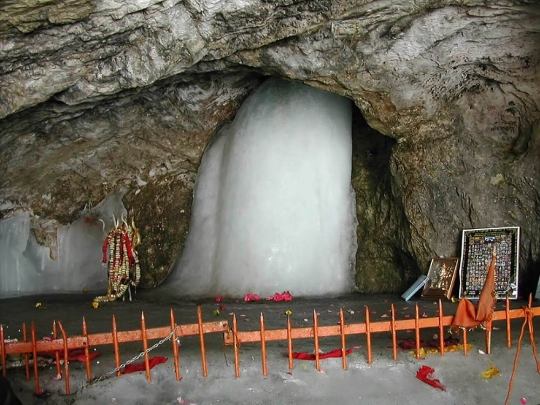

113 notes
·
View notes
Text

🚨: Terrorist attack on Hindu pilgrims in Reasi district, Jammu and Kashmir, India.
In a tragic event, a group of pilgrims met with a devastating accident when their bus careened off the road and plunged into a gorge near Teryath village in the Reasi district of Jammu and Kashmir. Reports indicate that at least ten individuals lost their lives, while over 30 sustained injuries in the incident, which occurred on Sunday. The bus, returning from the Shiv Khori cave shrine to Katra, a town renowned for the Vaishno Devi temple, was traveling along a link road of NH144A, navigating through dense forests and hilly terrain. Prompt response from locals and authorities led to rescue efforts, while security forces, comprising personnel from the police, Army, and CRPF, initiated a search operation to apprehend the assailants. The area, located 100 kilometers northwest of Jammu, has been cordoned off in response to the premeditated attack. Reasi SSP Mohita Sharma disclosed that the terrorists had orchestrated the assault, targeting the bus as it passed through the area. The driver was struck by gunfire, causing the vehicle to veer off course. Evidence, including bullet casings, was recovered from the scene, indicating the involvement of two masked assailants. Although the identities of the deceased and injured have yet to be officially confirmed, it is suspected that the pilgrims hailed from Uttar Pradesh. This incident underscores the potential spread of terrorist activities into previously unaffected regions, as Reasi district had hitherto remained insulated from the surge in attacks witnessed in neighboring districts such as Rajouri and Poonch. The Pir Panjal route, notorious for its rugged terrain, serves as a favored infiltration route for terrorists moving from the Line of Control (LoC) in Poonch and Rajouri towards Kashmir. Intelligence sources suspect the participation of Illiyas Fauji, a former Pakistani army SSG commando turned LeT operative, along with two other militants from Pakistan who have evaded capture since the deadly assault on an IAF convoy in Poonch on May 4. This recent attack in Reasi follows a similar incident on May 13, 2022, when terrorists targeted a bus transporting pilgrims from Katra to Jammu using "sticky bombs," resulting in four fatalities and 13 injuries. The assault evokes memories of the July 10, 2017, attack on a bus ferrying Amarnath pilgrims, which claimed seven lives and left 19 others wounded. Despite facing heavy gunfire, the driver in that instance managed to safeguard 52 passengers. According to data from the Union home ministry, eight civilians have been killed in Jammu and Kashmir in the first five months of the current year up to May 31. Concerns regarding security have been heightened in anticipation of the upcoming Amarnath Yatra, prompting Jammu ADGP Anand Jain to oversee security arrangements on Friday night. The review encompassed preparations not only for the annual Amarnath Yatra but also for the Mata Kheerbhawani mela, Budha Amarnath Yatra, and Shri Machail Yatra, emphasizing the establishment of joint control rooms to enhance coordination among all concerned agencies. The Amarnath cave shrine, nestled at an altitude of 3,880 meters in the South Kashmir Himalayas, is slated to host its annual pilgrimage from June 29 to August 19.
#jammuandkashmir#reasi#all eyes on reasi#terrorist attack#stop terrorism#india#hindusim#pakistani terrorists#indiaunderterrorism#jammukashmir#reasidistrict#stand with reasi#stand with jammu kashmir#dead poets society#literature#poem#poetic#poetry#poets corner#poets on tumblr#writers and poets#english literature#original poem
7 notes
·
View notes
Text
Baba Dariya Din RA-The Sufi Saint of Rishi Order by Haroon Rashid Bhat
© Google map
The Muslim Rishi movement shares much with its pre-Islamic counterpart in terms of certain beliefs, practices, and techniques. Both upheld the belief that ‘knowledge of God’ (Ma’rifat-e-Haqiqi) could be had through true ‘knowledge of the self’ (Ma’rfiat-e-Nafs). Like the pre-Islamic Rishis, Muslim Rishis, too, adopted stern austerities and often retired to the mountains and caves to…
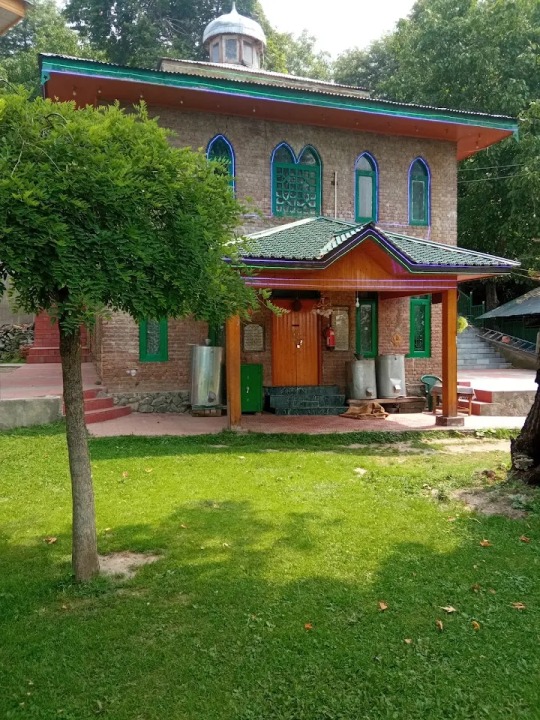
View On WordPress
#baba dariya din reshi#baba darya din Rishi#biography of Sufis of india and pakistan#biography of Sufis of Kashmir#ganderbal sufi shrine#kashmiri sufism#Rishi of kashmir#rishis of Kashmir#shrine of hazrat baba darya din Rishi ganderbal biography#sufi saints of Kashmir
0 notes
Text

April 2024: Muslims greet each other after Eid prayers outside the Hazratbal shrine in Srinagar, Kashmir. [Mukhtar Khan/AP Photo]
55 notes
·
View notes
Text




The aesthetics of Khanqah-e-Moula>
-Srinagar, Kashmir.
9 notes
·
View notes
Text
Parshuram Kothi, commonly known as Parshuram Temple, stands as a captivating symbol of heritage and spirituality in India's scenic Himachal Pradesh. Nestled in the ancient village of Nirmand, Kullu, this temple beckons travelers with its unique blend of architectural grandeur and historical significance. The temple's traditional Pahari style architecture, reminiscent of a hill fortress with its double-storeyed structure and gabled slate roof, is a sight to behold for history enthusiasts and architecture aficionados alike. Inside, visitors are greeted by intricately carved wooden balconies and pillars that depict vivid scenes from Hindu mythology. The main shrine holds a mystical statue of Parshuram with three heads, gifted in 900 A.D. by Rani Agartala of Kashmir, featuring a diamond eye at its center, adding to the temple's allure.

Offbeat places near Parshuram Kothi (Parshuram Temple) include hidden gems that promise enchanting experiences for adventurous souls. Explore the nearby Jalori Pass and Banjar Valley, where lush landscapes and serene vistas await, perfect for trekking and nature walks. These lesser-known destinations offer tranquility away from the bustling tourist spots, allowing travelers to immerse themselves in the natural beauty of Himachal Pradesh. Whether you're seeking solitude or thrilling outdoor adventures, the surroundings of Parshuram Kothi (Parshuram Temple) provide ample opportunities for exploration and discovery.
When visiting places to visit near Parshuram Kothi (Parshuram Temple), don't miss the picturesque Seraj Valley, just 77 kilometers away, known for its verdant hills and pristine landscapes. For those interested in cultural immersion, Shoja Village, located 86 kilometers from the temple, offers a glimpse into traditional Himachali life amidst stunning mountain scenery. Further afield, Nagini Village, 109 kilometers away, beckons with its tranquil ambiance and panoramic views of the Himalayas. Each of these destinations near Parshuram Kothi (Parshuram Temple) promises a memorable journey through Himachal's rich tapestry of natural beauty and cultural heritage.
#clearholidays#Parshuram Kothi (Parshuram Temple)#places to visit near Parshuram Kothi (Parshuram Temple)#Parshuram Kothi (Parshuram Temple) tourism#Parshuram Kothi (Parshuram Temple) travel guide#Himachal Pradesh#india#indian#travel#india travel#india tourism#incredible india#Kullu#100 days of productivity#1950s#19th century#3d printing#60s
2 notes
·
View notes
Text
Over 3.65 lakh pilgrims performed Amarnath Yatra so far; 4,821 Yatris left for Kashmir
JAMMU — Over 3.65 lakh pilgrims have so far performed the annual Amarnath Yatra as another batch of 4,821 Yatris left for Kashmir on Friday.
Since it started on June 29, a total of 3.65 lakh Yatris had ‘darshan’ inside the holy cave shrine so far.
Over 14,000 pilgrims arriving both from Baltal and Pahalgam routes had ‘darshan’ on Thursday, officials said.
“Another batch of 4821 Yatris left…
#Amarnath Cave Shrine#Amarnath Yatra#Amarnath Yatra Pilgrims#Jammu and Kashmir (J&K)#Kashmir#Shri Amarnathji Shrine Board (SASB)
0 notes